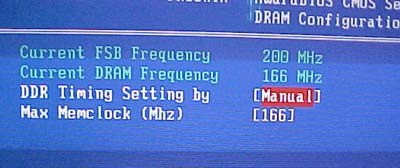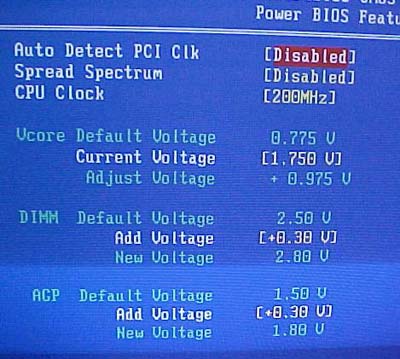When it comes to overclocking we have
high expectations from Epox motherboards and that's because they usually overclock so
well. Unfortunately, the 8HDA3+ does not give the end user the ability to change
the multiplier, so we were pretty sure that the processor would be maxing out
before the motherboard did.
Starting at 200 MHz we began to raise
the clock speed of the motherboard slowly. At around 215 MHz our memory started to give us
problems and raising the memory voltage didn't seem to help, memory frequency was lowered. After that was done, we
regained stability and slowly raised the clock speed again. At 225 MHz we began to encounter stability problems which were easily solved by
raising the Vcore to 1.6V.
We seemed to hit the wall at 230 MHz, and no matter what we did we could
not get the board to go any higher. I'm sure that the 8HDA3+ has more in it, but unfortunately the current BIOS just
throws up too many limitations.
Enter the blue BIOS:

As we mentioned earlier the Epox 8HDA3+ does
not allow the user to modify the memory timings which is quite unfortunate. With
that said, the board did come in last in all the benchmarks, but please remember
that the 8HDA3+ will be running with 2-3-3-6 timings (SPD on the Corsair
XMS3500 CAS2 DIMM's).

The 8HDA3+ is definitely a workstation motherboard... You can adjust the
motherboard frequency from 200-250 MHz in 1 MHz increments. Maximum
voltage for the CPU was 1.75V, 2.8V for the memory and 1.8V for the AGP.
And now, on with the benchmarks!
